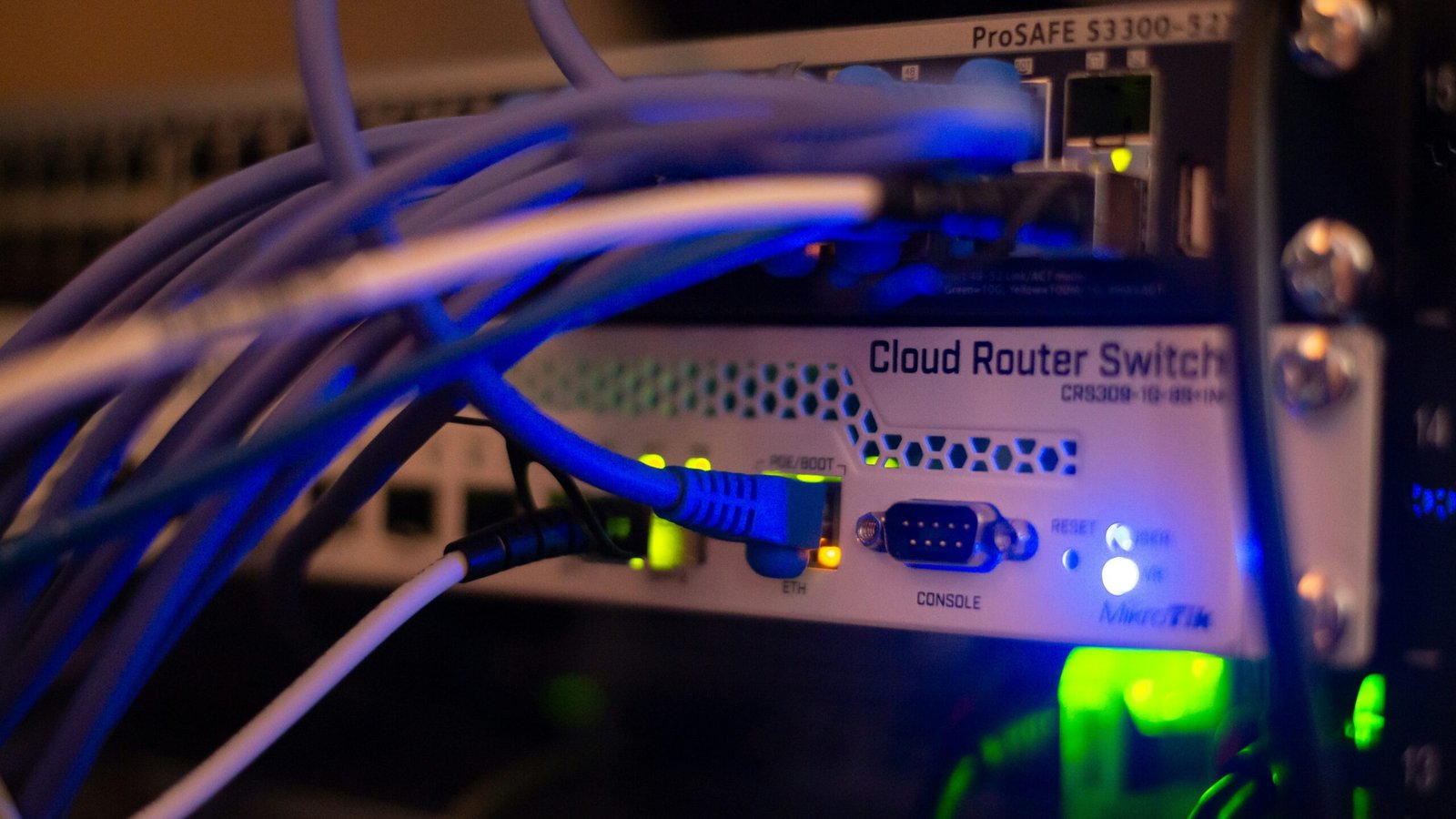Welcome to our complete introduction to fundamental cybersecurity for home networks. In this post, we’ll look at the significance of securing your home network, typical risks to be aware of, and practical steps you can take to secure your personal data and devices. Whether you are a newbie or have some experience with cybersecurity, this article will give you with helpful insights for protecting your home network.
In today’s digital world, where technology has become an essential part of our lives, it is critical to grasp the importance of cybersecurity. With an increasing number of linked gadgets in our homes, such as smartphones, laptops, smart TVs, and even smart appliances, the potential of cyber attacks has increased. Hackers and fraudsters are continually improving their strategies for exploiting weaknesses in these gadgets and gaining illegal access to our personal data.
Securing your home network is critical for safeguarding sensitive data, such as bank information, personal documents, and even your online activity. Implementing appropriate cybersecurity measures can help you avoid unauthorized network access, reduce the risk of malware infections, and safeguard the privacy and security of your digital life.
One of the most common risks to home networks is the availability of unprotected Wi-Fi networks. Many users fail to change their router’s default passwords or use weak passwords, allowing hackers to gain access to their network. Once a hacker has gained access to your network, they can monitor your online activities, intercept important information, and even launch assaults on other devices connected to it.
Malware, which includes viruses, ransomware, spyware, and other harmful software, poses a huge danger. Malware can infect your device through a variety of methods, including downloading infected files, clicking on malicious links, or visiting hacked websites. Malware, once infected, can cause considerable damage, such as data loss, financial loss, and identity theft.
You can take a number of practical steps to defend your home network from these threats. First, make sure your Wi-Fi network has a strong password. Change your router’s default password to something unique and difficult, including letters, numbers, and special characters. In addition, update your router’s firmware on a regular basis to address any security issues.
Furthermore, it is critical to maintain your smartphones, PCs, and smart home devices up to date with the most recent software and security patches. Software updates frequently include critical security fixes that help safeguard your devices against known vulnerabilities.
In addition to these precautions, consider installing reliable antivirus software on all of your devices. Antivirus software detects and removes malware, provides real-time threat protection, and allows you to browse the internet safely. It is also important to enable and configure your devices’ firewalls to prevent unauthorized access.
By taking these practical actions and implementing appropriate cybersecurity measures, you may greatly improve the security of your home network. Remember that cybersecurity is a continual process, so stay up to date on the latest threats and security best practices. With the information and tools in this book, you can take charge of your home network’s security and safeguard your personal information and devices from cyber attacks.
Why is cybersecurity important for home networks?
In today’s networked world, our houses are full of smart devices that require internet access. These devices, which include smartphones, laptops, smart TVs, and home security systems, store and transfer sensitive personal information. Without effective cybersecurity safeguards in place, your home network is vulnerable to cyber assaults, jeopardizing your privacy and data.
Cybercriminals are continually upgrading their methods for exploiting vulnerabilities in home networks. They can get unauthorized access to your devices, steal your personal information, and even use your network to carry out attacks on other targets. Prioritizing cybersecurity allows you to secure your digital assets, retain your privacy, and ensure your family’s safety.
One of the primary reasons why cybersecurity is critical for home networks is the growing number of cyber assaults against residential users. As more people rely on smart devices and internet access, hackers see home networks as a prime target. They understand that many people do not prioritize cybersecurity in their homes, making them an accessible target.

Furthermore, a cyberattack on a home network can have serious effects. Imagine waking up one day to discover that your smart home devices aren’t working properly, or worse, that your personal information has been stolen and your bank accounts have been drained. Such an occurrence might have terrible financial and emotional consequences.
Another reason why cybersecurity is critical for home networks is the growing amount of personal information saved on our gadgets. Our smartphones, laptops, and other smart gadgets store a lot of sensitive data, including credit card information, passwords, medical records, and private chats. Without adequate security measures, this information might easily slip into the wrong hands.
Furthermore, home networks are frequently used by several family members, including youngsters. Children may be unaware of the risks connected with accessing the internet, rendering them vulnerable to cyber threats. By establishing effective cybersecurity safeguards, you can protect your family members, particularly the younger ones, from internet threats.
Finally, as the Internet of Things (IoT) expands, an increasing number of devices are connecting to home networks. While this simplifies and automates our lives, it also expands the attack surface for hackers. Each connected device provides a possible entry point for hackers to access your network. By securing your home network, you may reduce the hazards connected with IoT devices while still enjoying their benefits.
Common Cyber Threats To Home Networks
Before digging into the best practices for securing your home network, it’s vital to grasp the following typical cyber threats:
1. Malware.
Malware, or malicious software, is any software designed to harm or exploit computer systems. It can get into your home network via infected email attachments, dubious downloads, or compromised websites. Once entered, malware can steal critical data, disrupt your network, and even take control of your equipment.
2. Phishing attacks.
Phishing attacks occur when fraudsters impersonate legitimate companies in order to deceive people into disclosing sensitive information such as passwords or credit card numbers. These attacks frequently take the shape of emails, SMS messages, or phony websites. Falling prey to a phishing assault can result in identity theft or financial loss.
3. Weak passwords.
Using weak or readily guessed passwords is a common security flaw. Cybercriminals might use weak passwords to gain unauthorized access to your devices or network. Use strong, unique passwords for all of your accounts, and enable two-factor authentication wherever possible.
4. Unsecured Wi-Fi networks.
Leaving your Wi-Fi network unprotected can allow unwanted users to connect to it and access your personal information. To prevent illegal access, ensure that your Wi-Fi network is secure using a strong password and encryption.
5. Ransomware.
Ransomware is a sort of software that encrypts your files and retains them until you pay a ransom. It can get into your home network via malicious email attachments, bogus software upgrades, or corrupted websites. Once your data have been encrypted, you will get a ransom demand, typically in the form of bitcoin, in exchange for the decryption key. Paying the ransom is not suggested because there is no guarantee you will regain access to your files.
6. Social engineering.
Social engineering is a technique used by hackers to trick people into disclosing sensitive information or taking activities that jeopardize their security. This can include impersonating a trusted people or group, employing psychological manipulation, or exploiting human vulnerabilities. It is critical to be wary of unsolicited demands for personal information and to confirm the veracity of any message before taking action.
7. IoT vulnerabilities
The Internet of Things (IoT) is a network of interconnected devices that communicate and share data with one another. While IoT devices provide convenience and automation, they may also pose security issues. Many IoT devices have insufficient security safeguards, rendering them susceptible to hacking. To reduce the risk of unwanted access, your IoT devices’ firmware should be updated on a regular basis and secured with strong passwords.
8. Attacks by the Man in the Middle
Man-in-the-middle attacks are when a cybercriminal intercepts communication between two parties without their knowledge. This can happen when you connect to an unsecured public Wi-Fi network or when a hacker takes control of a router. The attacker can eavesdrop on the conversation, modify the data being sent, or even introduce malware into it. To avoid man-in-the-middle attacks, utilize secure and encrypted connections, such as VPNs, while accessing sensitive data or completing transactions.
By becoming aware of these frequent cyber risks, you may take the appropriate precautions to protect your home network and personal information. Implementing effective security measures and remaining watchful against potential attacks will help ensure the safety of your digital environment.
8. Enable Two-factor authentication.
Two-factor authentication (2FA) strengthens your home network’s security by forcing users to present two forms of identity before gaining access to their accounts. This can take the form of a password and a unique code transmitted to a trusted device. Enable 2FA on all of your devices and online accounts to prevent unwanted access.
9. Regularly back up your data.
Backing up your data is critical in the event of a security breach or hardware breakdown. Make regular backups of crucial files and store them on an external hard drive or on the cloud. This ensures that even if your network is compromised, you can retrieve your important data.
10. Educate yourself and your family.
Stay up to date on the latest cybersecurity dangers, and educate yourself and your family on best practices for online safety. Teach youngsters the value of secure passwords, safe browsing habits, and the dangers of disclosing personal information online. You can help to create a more secure home network by instilling a culture of cybersecurity awareness.
Implementing these best practices will dramatically improve the security of your home network. Remember that cybersecurity is a continual process, so stay aware and up to date on the latest security measures. To keep up with emerging threats and technology, assess and update your security measures on a regular basis.










